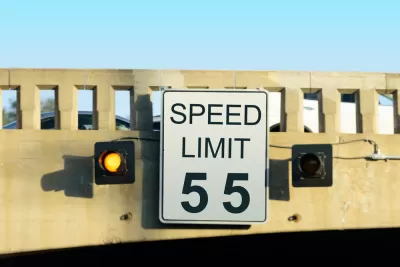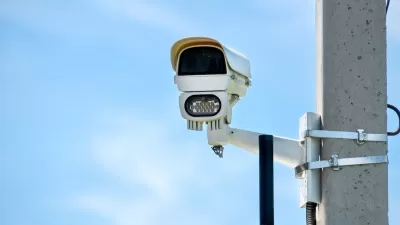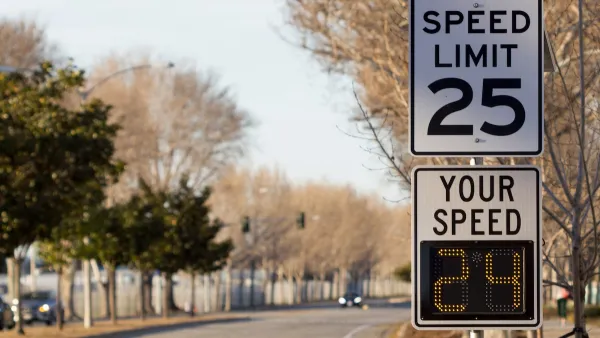While most Americans agree that speeding is a threat to public safety, dysfunctional laws and inadequate enforcement perpetuate a culture of tacitly sanctioned high-speed driving.

"In the first six months of 2021, projected traffic fatalities in the U.S. rose by 18 percent, the largest increase since the U.S. Department of Transportation started counting and double the rate of the previous year’s surge." As Henry Grabar writes in a piece detailing the history of the speed limit in the U.S., this can be attributed in part to more speeding induced by empty roads during the pandemic. Yet Americans continue to speed nonchalantly: half of drivers surveyed said they've gone more than 15 miles over the speed limit in the past month.
The nation’s most disobeyed law is dysfunctional from top to bottom. The speed limit is alternately too low on interstate highways, giving police discretion to make stops at will, and too high on local roads, creating carnage on neighborhood streets. Enforcement is both inadequate and punitive.
While the data on whether speed causes more crashes shows conflicting results, it is clear that crashes that do occur at higher speeds cause more severe injuries.
One solution, according to Grabar, is automated speed cameras. New York City, which installed a network of 750 cameras near city schools, saw a 72 percent reduction in speeding. But the concept is controversial to some civil rights advocates who say the cameras still target communities of color unfairly. Meanwhile, others argue that cameras provide a safer enforcement option than physical encounters with police, which can turn deadly.
Grabar suggests three changes that could make American roads safer: replace rural intersections with roundabouts, narrow city streets, and implement other traffic calming measures; improve driver education; and regulate speed through technology in vehicles themselves, a tactic gaining ground in Europe.
FULL STORY: The American Addiction to Speeding

Planetizen Federal Action Tracker
A weekly monitor of how Trump’s orders and actions are impacting planners and planning in America.

Maui's Vacation Rental Debate Turns Ugly
Verbal attacks, misinformation campaigns and fistfights plague a high-stakes debate to convert thousands of vacation rentals into long-term housing.

Restaurant Patios Were a Pandemic Win — Why Were They so Hard to Keep?
Social distancing requirements and changes in travel patterns prompted cities to pilot new uses for street and sidewalk space. Then it got complicated.

In California Battle of Housing vs. Environment, Housing Just Won
A new state law significantly limits the power of CEQA, an environmental review law that served as a powerful tool for blocking new development.

Boulder Eliminates Parking Minimums Citywide
Officials estimate the cost of building a single underground parking space at up to $100,000.

Orange County, Florida Adopts Largest US “Sprawl Repair” Code
The ‘Orange Code’ seeks to rectify decades of sprawl-inducing, car-oriented development.
Urban Design for Planners 1: Software Tools
This six-course series explores essential urban design concepts using open source software and equips planners with the tools they need to participate fully in the urban design process.
Planning for Universal Design
Learn the tools for implementing Universal Design in planning regulations.
Heyer Gruel & Associates PA
JM Goldson LLC
Custer County Colorado
City of Camden Redevelopment Agency
City of Astoria
Transportation Research & Education Center (TREC) at Portland State University
Jefferson Parish Government
Camden Redevelopment Agency
City of Claremont





























